Disney Dads: An Exploration of Fatherhood
Disney films have captivated audiences for generations, offering timeless tales of adventure, love, and moral lessons. Among the recurring themes in Disney movies is the exploration of parent-child relationships with fathers often playing key roles. These characters range from wise and supportive mentors to flawed and distant figures, embodying diverse interpretations of fatherhood. Disney fathers distinctly portray paternal influence, responsibilities, and growth.
The Wise and Supportive Father
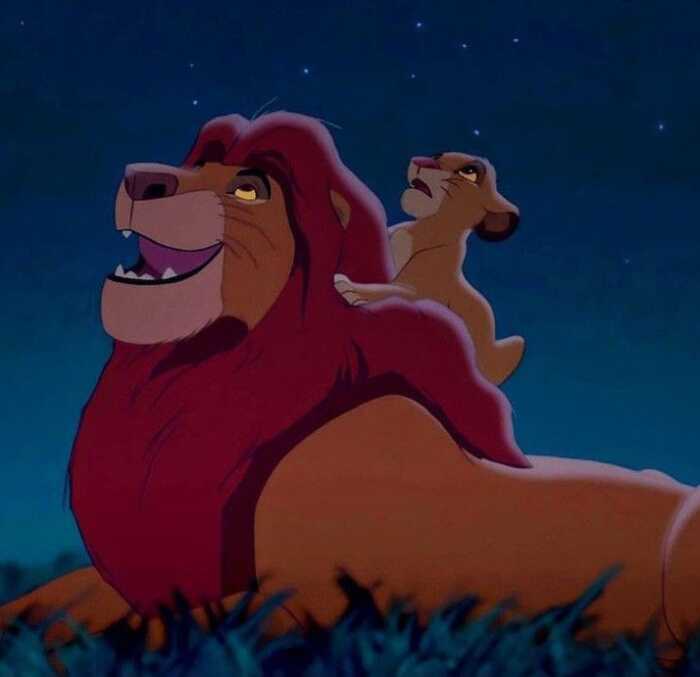
Mufasa from The Lion King (1994) is among the most recognizable Disney fathers. Mufasa teaches his son Simba priceless life lessons and is the embodiment of power, love, and wisdom. Mufasa teaches Simba the value of appreciating nature and the interdependence of all living things through the well-known “Circle of Life” speech. His rigorous yet gentle leadership establishes the groundwork for Simba’s eventual development into a capable leader. Mufasa’s presence endures as a moral compass even after his passing, highlighting the lessons a father imparts that never go out of style.
Similarly, Geppetto in Pinocchio (1940) symbolizes a father’s unwavering love and devotion. As a simple woodcarver yearning for a son, he creates Pinocchio, a wooden puppet that magically comes to life.
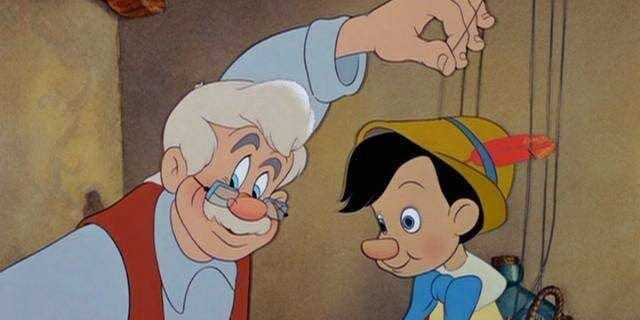
One of the most moving aspects of Geppetto’s story is his willingness to make sacrifices for Pinocchio. He goes hungry to provide for him and when Pinocchio wanders out Geppetto embarks on dangerous journey to rescue and protect him including being swallowed by a whale in the original story. These acts of devotion highlight Geppetto’s status as a symbol of unwavering parental love.
The Flawed and Distant Figures
Not all Disney fathers are paragons of morality; some have weaknesses that cause conflict and propel character growth. For example, King Triton in The Little Mermaid (1989) struggles with being overprotective and tyranny. Him being unable to understand Ariel’s desires strains their relationship; this shows how difficult it is for Triton to combine authority and empathy. The King’s ultimate recognition of his daughter’s individuality, as well as his readiness to allow her to pursue her ambitions, demonstrate a father’s ability to develop.
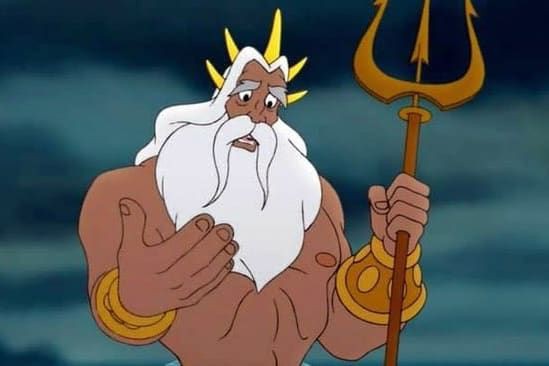
Another complicated character is Maurice in Beauty and the Beast (1991). Even though he is loving and kind, Maurice’s eccentricity and lack of foresight sometimes lands Belle in difficult situations. However, his unwavering support and belief in Belle’s strength reveals the depth of his paternal love.
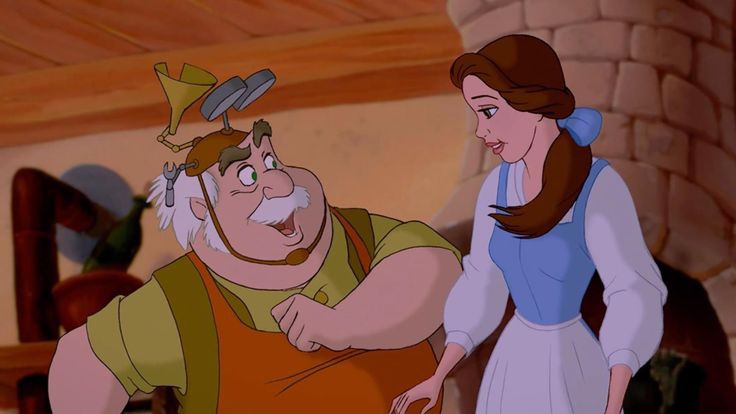
Maurice represents a father who has his flaws but remains an solid source of encouragement. He also becomes a source of inspiration; Maurice inspires Belle to be a compassionate and brave individual.
The Absent Father
A common theme in Disney stories is absence, as many of the main characters do not have a father figure who is involved or present. Characters are frequently pushed into independence and resiliency by this absence. Cinderella is left at the mercy of her nasty stepmother after her father passes away very early in the 1950 film Cinderella. His absence sets up the story’s main conflict and emphasizes the significant effects that a father’s absence may have on a child’s life.
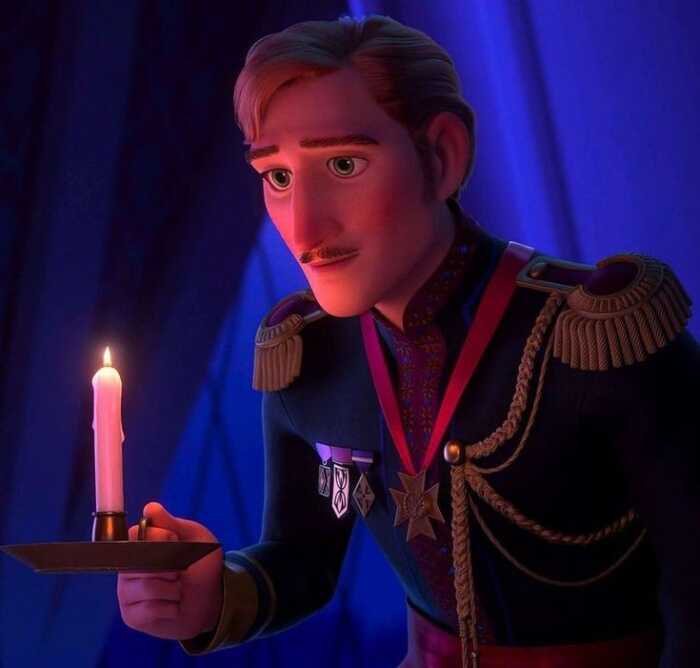
Similar to this, Anna and Elsa’s father, King Agnarr, passes away along with their mother in the 2013 film Frozen, leaving the sisters to face the difficulties of emotional attachment and leadership alone.
Even though their father wanted to keep Elsa safe by isolating her, his failure to help her comprehend her abilities added to her difficulties and it highlighted the unexpected repercussions of parental choices.
Found and Surrogate Fathers
In certain Disney tales, the protagonist is raised and guided by surrogate or found fathers. In Aladdin (1992), the Genie acts as a father figure and mentor to Aladdin, providing him with emotional support as well as helpful guidance.
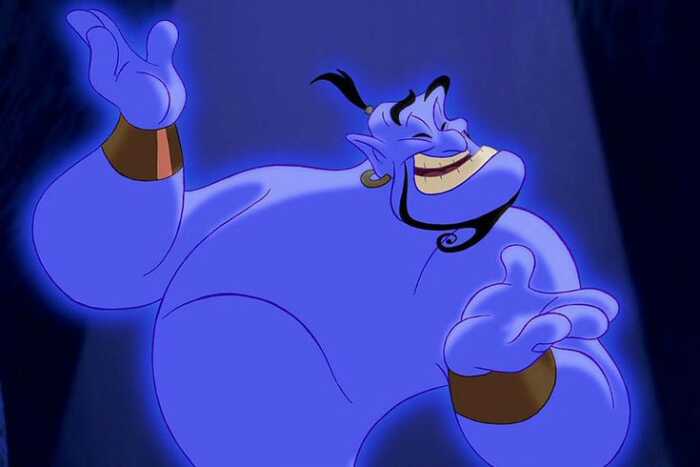
Similarly, Baloo in The Jungle Book (1967) teaches Mowgli about the pleasures and dangers of jungle life while acting as a relaxed yet loving father figure. These surrogate relationships prove that fatherhood transcends biology. Regardless of family ties, a father figure’s function is defined by the love, support, and the protection they provide.
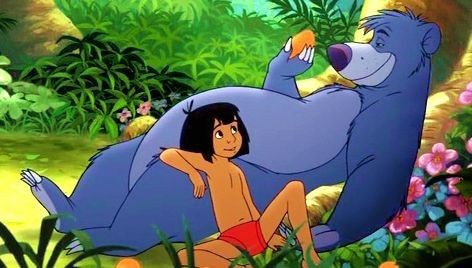
Another famous surrogate father is Rafiki in the Lion King. When Simba loses his father, Mufasa, Rafiki, the sage and quirky mandrill from The Lion King, might be seen as a substitute father figure who gives him direction, insight, and spiritual stability. Rafiki fills a function that goes beyond mentoring when Simba losses direction. He reminds Simba of his role in the circle of life by reintroducing him to his identity and lineage.
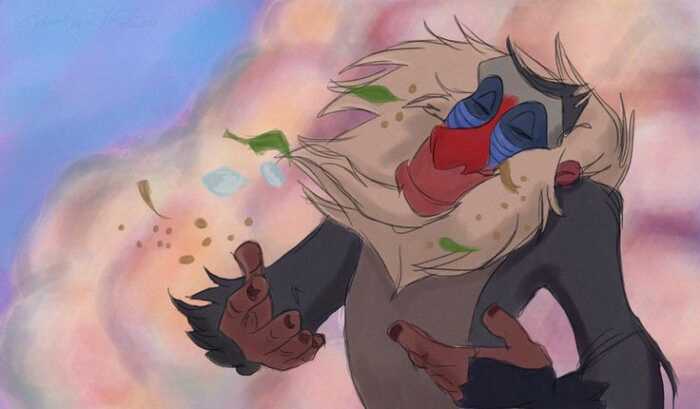
Rafiki successfully fills the void created by Mufasa’s passing by assisting Simba in reestablishing a connection with his memories through the use of humor, riddles, and spiritual wisdom. Under his leadership, Simba is inspired to confront his fears, own up to his history, and regain his rightful position as king.
Although unusual, Rafiki’s position as a father is an important one. He guides Simba toward self-realization rather than giving orders or lecturing him. His well-known statement, “The past can hurt, but the way I see it, you can either run from it or learn from it,” makes Simba’s decide to face Scar and bring the Pride Lands back into harmony.
These surrogate relationships prove that fatherhood transcends biology; a father figure’s function is defined by the love, support, and protection they provide to whom they consider as their children.
The Evolution of Disney Fatherhood
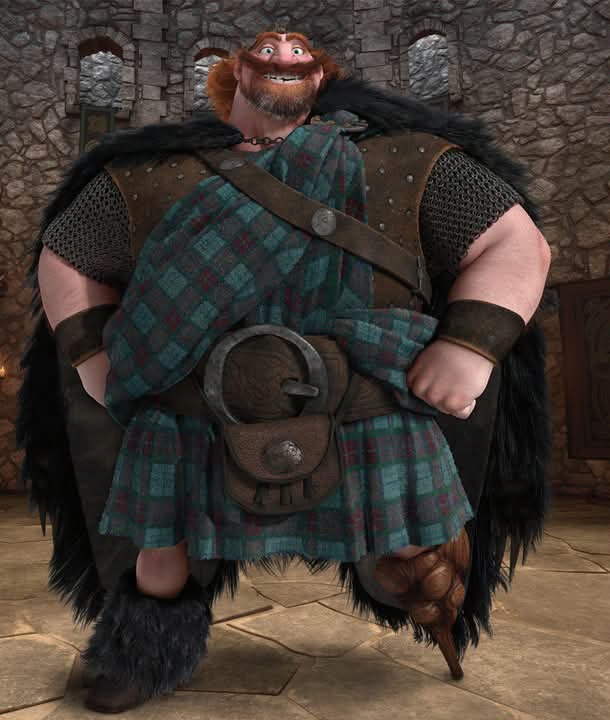
Disney’s depiction of fathers has changed throughout the years to take into account shifting social norms and expectations. Fathers were frequently depicted in previous movies as aloof authoritarian figures or as representatives of archaic patriarchal ideals. However, fathers are shown in more recent movies as being involved and emotionally expressive. King Fergus, for instance, is a devoted, witty, and encouraging father in Brave (2012); he values his daughter Merida’s freedom even when her decisions go against social norms.
Furthermore, as seen in Inside Out (2015), where Riley’s father, Bill Andersen is an involved and loving parent, contemporary Disney fathers frequently divide parenting duties with their spouses. Contemporary perspectives on co-parenting and the value of emotional openness in fatherhood are reflected in this change.
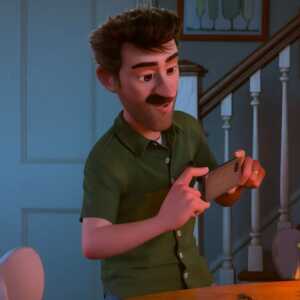
Wrap Up
A range of paternal archetypes are represented by Disney fathers – from the absent and imperfect to the wise and helpful. Disney examines the nuances of parenting through these characters, emphasizing its rewards, difficulties, and transforming possibilities. Whether they are sources of conflict, warnings, or role models, Disney fathers are crucial in shaping the stories and moral messages that appeal to viewers of all ages. Their experiences serve as a reminder that fatherhood – in all its manifestations – is a journey filled with love, discovery, and development.
What do you think? Leave a comment.
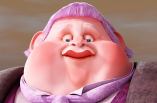
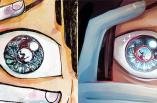
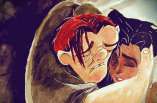
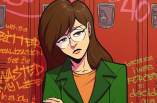

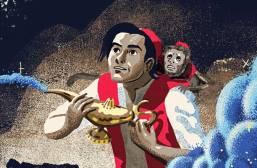
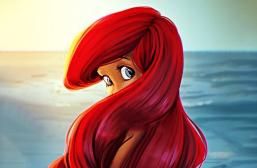
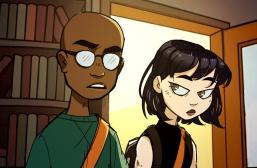
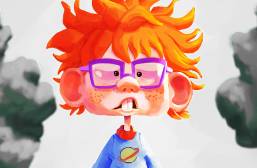
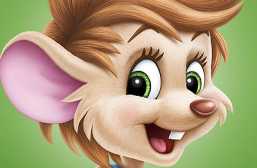
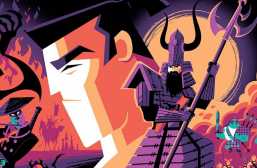
Yeah, that’s true.
Disney dads really represent different sides of fatherhood. Mufasa’s influence on Simba is such a great example of how a dad’s love can shape a child’s sense of responsibility and leadership. It’s not just about guidance, but also about passing down wisdom that lasts beyond death. The fact that his lessons linger even after he’s gone really speaks to the power of a good father figure, even when they’re physically absent.
This made me appreciate how much depth Disney gives to father-daughter relationships.
Earlier films often showed fathers as distant or overly authoritarian.
One of the most underrated Disney dads is Mr. Incredible from The Incredibles. He may have super strength, but his real strength comes from how much he cares about his family. The whole movie is about him learning to balance his desire for heroism with his duty as a dad. His evolution as a father really resonates with anyone who’s tried to juggle personal goals with the responsibilities of parenthood.
It’s like being a parent is more challenging than being a superhero.
I’ve always loved how Finding Nemo portrays Marlin’s fatherhood journey. At the start, he’s overly protective, especially after losing his wife and all his other eggs. But over time, he learns to trust his son, Nemo.
To this day, my younger sister can’t look at the Mufasa death scene without sobbing.
She cried when we first saw the movie in theaters, years ago.
Same here. I still cry EVERY. SINGLE. TIME. Same with Meg’s death in Hercules.
I cried seeing Lion King mentioned in the article briefly. Can’t even begin to imagine how much more heartbreaking it’s going to be in the live action movie.
Your younger sister would HATE me because SCAR is my favorite Disney character.
I think Scar is hilarious in his words, mannerisms and expressions (minus the killing his brother and trying to kill his nephew part).
I still can’t watch that scene without the tears pouring.
She and I both!!
In the past, we saw more distant, almost villainous dads, like King Triton in The Little Mermaid. He was so overbearing and struggled with control, but by the end, he changed and learned to support Ariel’s independence.
Disney’s portrayal of dads reflects a shift in cultural attitudes toward parenting. It’s refreshing to see more modern, emotionally supportive dads like Bill Andersen from Inside Out.
Geppetto in Pinocchio is spot-on!! This guy literally went to the ends of the Earth to protect his son. I mean, getting swallowed by a whale for your kid?
It’s so underrated how selfless Geppetto is, especially considering he wasn’t even biologically related to Pinocchio.
Rafiki’s role in The Lion King as a guide for Simba after Mufasa dies is such a unique take.
Mufasa’s death in The Lion King is probably one of the most heart-wrenching moments in Disney history.
100%. What’s really powerful is how Simba carries Mufasa’s wisdom with him, even after his death.
Maurice isn’t perfect. He’s kind of absent-minded at times, but he’s always there for Belle!
Hector from Coco’s a cool father in my book.
Mufasa was a great father. He saved his son’s life at the cost of his own.
The Best Disney father is Mufasa/Darth Vader-James Earl Jones
The fact that I can’t call my dad because he died 12 years ago, makes this even more heartbreaking for me…
In a lot of older Disney movies, dads were more like distant authority figures or villains. But King Fergus is this loving, supportive dad who actually wants his daughter to find her own path. It’s cool to see this change in Disney’s portrayal of fathers, especially when it comes to encouraging independence instead of pushing traditional roles on your kids.
Maurice in Beauty and the Beast is such a great example.
His relationship with Belle isn’t perfect!
The theme of fatherhood in Disney really hits differently when you look at the absent fathers, like Cinderella’s dad.
Sometimes, Disney doesn’t shy away from good topics.
I love the idea of surrogate fathers in Disney movies. Baloo in The Jungle Book isn’t Mowgli’s biological father, but he teaches him life lessons, shows him love, and looks out for him.
A lot of times, Disney dads are shown as wise mentors, like Mufasa or King Fergus.
Mufasa is the one father who loved his son so much that, even after his death, he could give Simba one more word of advice.
“Remember who you are. You are my son, and the one true king.”
Remember who you are!!!
i love that line
What about GOOFY!!!! He is grossly underrated as a Father, the effort he makes to connect with Max throughout A Goofy Movie is nothing short of humbling
King Agnarr’s absence in Frozen is a huge deal. Interesting how his decision to isolate Elsa ends up causing more harm than good, even though he thought he was protecting her.
Triton is clearly overprotective and struggles to understand Ariel’s dreams, but by the end, he learns to let go.
The Lion King nails the idea of fatherhood and legacy. Mufasa’s teachings stay with Simba long after his death.
AND Simba uses those lessons to become a great leader.
Mufasa is the most amazing dad. He reminds me of my own father.
Zeus, Fa Zhou, Marlin, and of course Mufasa are the best dads ever. I wish I had a dad like one of them.
In real mythology Zeus was terrible
I like them all so much. Ah especially Mufasa!
So many great Disney dads, so few Disney moms lol
I think whitebeard is the best father in all of animation however these examples are extremely well produced
King Triton is hot and i would’ve chosen him over the mermaid
Mufasa is my best Disney dad
According to me whitebeard is the best father in all of animation but others are also good so we can say that everyonne has his own favourite.
to me, Mufasa will always be in my heart due to how powerful and righteous leader, and supportive and protective father to Simba. Your exploration of Disney fathers is insightful and well-structured. Highlighting the diversity and roles of father figures in Disney films, from the wise and supportive to the flawed and distant. The analysis of their growth and influence on their children is particularly strong.